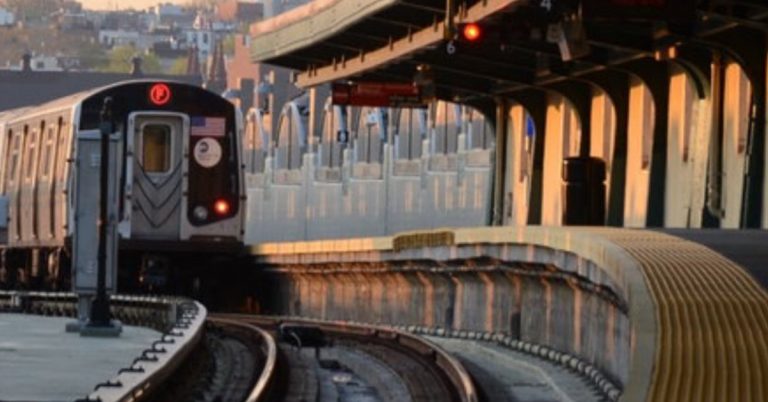Amtrak One: Joe Biden can Accelerate Economic Recovery by Renewing America’s Rails
Published in The Philadelphia Inquirer – December 14, 2020
President-Elect Joe Biden has an answer for our most pressing problems, and it’s waiting at the station. When Biden and Senator Kamala Harris won the 2020 election, Darryl Young of the Summit Foundation tweeted an image of Amtrak’s brand new Acela train, photoshopped to include the presidential seal, and captioned it ”There ought to be an Amtrak One.”
Biden could send a powerful message by switching from Air Force One to Amtrak One for presidential travel between cities a few hundred miles apart. That’s the sweet spot where rail travel is more convenient and environmentally sound than driving or flying. Axios and CNN report that the President-elect and his transition team are already considering traveling by train to the inauguration on January 20, 2021, “ditching the typical flourish of arriving in Washington on an Air Force plane, pulling in instead on the same Amtrak train he rode to and from Delaware for 30 years as a senator.”
During his senate tenure, “Amtrak Joe” traveled more than two million miles by train between Washington and Wilmington. In 2017, after eight years as Vice President, Biden and his wife Jill traveled home to Delaware on Amtrak. Hours after launching his presidential campaign in 2019, Biden was spotted riding a train to New York—a reminder of how much rail travel is a regular part of his life.
As president, Biden can make Amtrak One a regular part of his travel, reassuring a pandemic-wary public that transit is safe. He can show solidarity with frontline workers by traveling on Amtrak One to make economic and policy announcements, visit hospitals, health care facilities, retail distribution centers, and factories. That will highlight how transit investment protects historically underserved areas from pollution that disproportionately raises the risk of health problems, including COVID-19.
Each September, President Biden could travel by train from Washington to New York for the UN General Assembly. The current trip involves a flight on Marine One from the White House to Joint Base Andrews, followed by a flight on Air Force One to JFK Airport, another helicopter flight on Marine One to the Wall Street Heliport, and finally a motorcade from downtown to midtown Manhattan.
Instead, Biden could motorcade a few blocks from the White House to Union Station, take Amtrak One directly to New York Penn Station in midtown Manhattan, and finish the trip with a short motorcade eight blocks east and six blocks north to the UN. By doing so, Biden would use the prominence of the presidency to demonstrate the convenience of center-city-to-center-city travel, and set an example for leaders everywhere to cut their own carbon emissions.
Could presidential trips on busy lines like the Northeast Corridor cause delays for daily rail riders? Possibly, but Biden can use these trips to draw attention to improvements that will benefit thousands of year-round customers. For example, an onboard “rail briefing” for reporters could highlight the need to fix the 80/20 funding disparity, in which revenue from the Transportation Trust Fund has been invested unequally since 1982: 80% for highways, and 20% for transit.
Fixing the 80/20 disparity to invest more equally in transit will help prevent “extreme traffic” that researchers at Vanderbilt University say we face if transit cuts prompted by COVID-19 cause riders to switch to cars. Once Congress passes the HEROES Act that includes COVID-19 relief funding to keep transit running, Biden could take a delegation via Amtrak One to sign the bill into law in 30th Street Station, highlighting Philadelphia’s key role in rail travel linking Washington to Boston, Harrisburg, Pittsburgh, and beyond.
In a 2010 op-ed, then-Vice President Biden explained how decades on the train gave him “an understanding of—and a respect for—the role of rail travel in our society and our economy.” A decade later, in an unprecedented moment of national crisis, President Biden has an opportunity to rally an economic recovery built on renewing the nation’s rails. In doing so, he can rebuild the middle class, revitalize communities, and reignite our national identity as a can-do country.
Photo Credits: Adam Schultz/Biden for President, Democratic National Convention, Alex Wong/Getty Images.
Stewart Mader works with agencies and policy makers to build better transit, from advocacy to operations, apps to maps, and wayfinding to payment. He previously served as the first Chief Customer Experience Officer for NJ Transit‘s 270 million annual passenger trips, and guided customer experience for the Port Authority of NY & NJ‘s 80 million annual transit riders as Chair of PATH Riders Council. His insights appear in Mass Transit, Mobility Lab, The Philadelphia Inquirer, and other leading publications.



